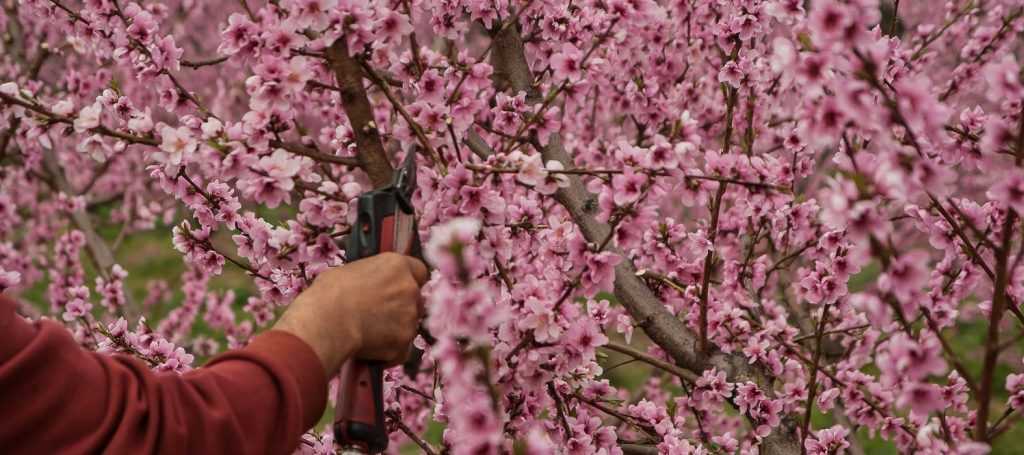
Fruit Trees: The Formative Pruning of a Maiden Tree
to achieve a goblet or espalier shape
Contents
The scion is a one or two-year-old grafted fruit tree young plant that needs training. It’s ideally planted in autumn. Various forms exist: you can for example train it as a goblet or espalier it against a support. Here are our pruning tips to achieve these different fruit-bearing forms.
The fruit tree in goblet form
The fruit tree develops from several spreading scaffold branches, resembling the shape of a goblet. This very common shape has the advantage of allowing good air and light penetration while making the harvest accessible. The height of the trunk varies, ranging from 40 cm to 1.50 m.
How to train a fruit tree into a goblet shape?
- When planting, stake the young plant.
- Prune the young plant at the desired height, above 3 or 4 eyes distributed on either side of the trunk.
- Remove the buds located below.
- From these 3 or 4 eyes will form the scaffold branches, which will gradually take on the shape of a goblet.
- The following year, prune these scaffold branches to 20 or 25 cm in length, after an outward-facing eye. By pruning the scaffold branches that have produced 2 new branches, you thus obtain 6 or 8 scaffold branches.
![]()
- You can place a circle (made of willow or hazel, for example) in the middle to maintain the goblet shape or very gently tie the scaffold branches to stakes placed at an angle to lower them.
- The following winter, prune these scaffold branches to 20 or 25 cm from the previous pruning, after an outward-facing eye.
Read also
Pruning fruit trees in palmateTrained shapes
Espalier training allows fruit trees to be grown in a space with limited depth, making harvesting and maintenance easier while reducing disease risks through good air circulation and light exposure. The first fruiting occurs more quickly, but these forms require regular pruning.
Espalier training works particularly well for apple trees and pear trees. It can also be applied to apricot trees or peach trees, allowing them to be sheltered against a wall in cooler regions. Check the variety, its vigour and the rootstock used, as they may be more or less suited to espalier training.
The most common espalier forms are:
- the U-shaped palmette (single or double) and the Verrier palmette: The single U consists of two vertical branches from the young plant, forming a U shape, spaced 30 cm apart and about 2.50 m tall. A double U (two U shapes side by side) or a Verrier palmette (small U(s) within a large U) can also be created.
- the cordon: mainly applied to apple trees, trained horizontally on one or two arms (left and right) and on one or two tiers, spaced 40 cm apart.
- the oblique palmette: from a vertical cordon, lateral shoots develop and are trained obliquely.
Here are two examples of creating an espalier from a young plant:
Forming a single U:
- Prepare an espalier support, with variable length and construction depending on the number of young plants to be planted and the location (wall, hedge…).
- For each young plant, provide two vertical slats spaced 30 cm apart to support the two vertical branches, as well as horizontal wires: the first should be placed 30 cm above the ground and the others spaced 50 cm apart.
- Plant the young plant and prune it to 30 cm above the ground, above 2 lateral buds, one on the left and one on the right.
- Remove all eyes below. When the two shoots from the pruning reach 25 to 30 cm, attach them temporarily to the support at an angle. If one shoot grows faster, lower it further and raise the other.
- The following season, train the shoots horizontally and raise the ends vertically, attaching them to the support without tightening too much. Remove eyes forming at the bend and pinch lateral shoots back to 3 leaves.
- Extend the cordons by 25 cm each year, pruning after an eye opposite to the last pruning’s eye to keep the cordon as straight as possible.
- Remove eyes on the front or back of the vertical cordon to encourage spur formation on the sides. Keep one spur every 15 cm. Pinch the tips of vigorous upper lateral shoots if they outgrow the main branch.
Forming a single-tier cordon:
- Position a horizontal wire 40 cm above the ground between two posts spaced 2.50 m apart.
- Plant the young plant and attach it to a stake.
- Gently bend it to one side (left or right) and attach it (without overtightening) to the horizontal wire.
- Prune the tip to 30 cm, after a downward-facing eye.
- Remove eyes on the trunk and those at the bend.
- Extend the cordon by 20 to 30 cm each year, always pruning after a downward-facing eye. Remove vertical shoots. Keep one spur every 15 cm, ideally alternating sides.
- In summer, pinch lateral shoots back to the 5th leaf.
Pruning techniques for espalier-trained trees are covered in a dedicated guide (see advice sheet: pruning espalier-trained fruit trees).
Discover other Apple trees
View all →Available in 1 sizes
Available in 1 sizes
Available in 1 sizes
Available in 1 sizes
Available in 1 sizes
Available in 1 sizes
Available in 1 sizes
Available in 1 sizes
Available in 1 sizes
Available in 1 sizes
- Subscribe!
- Contents


































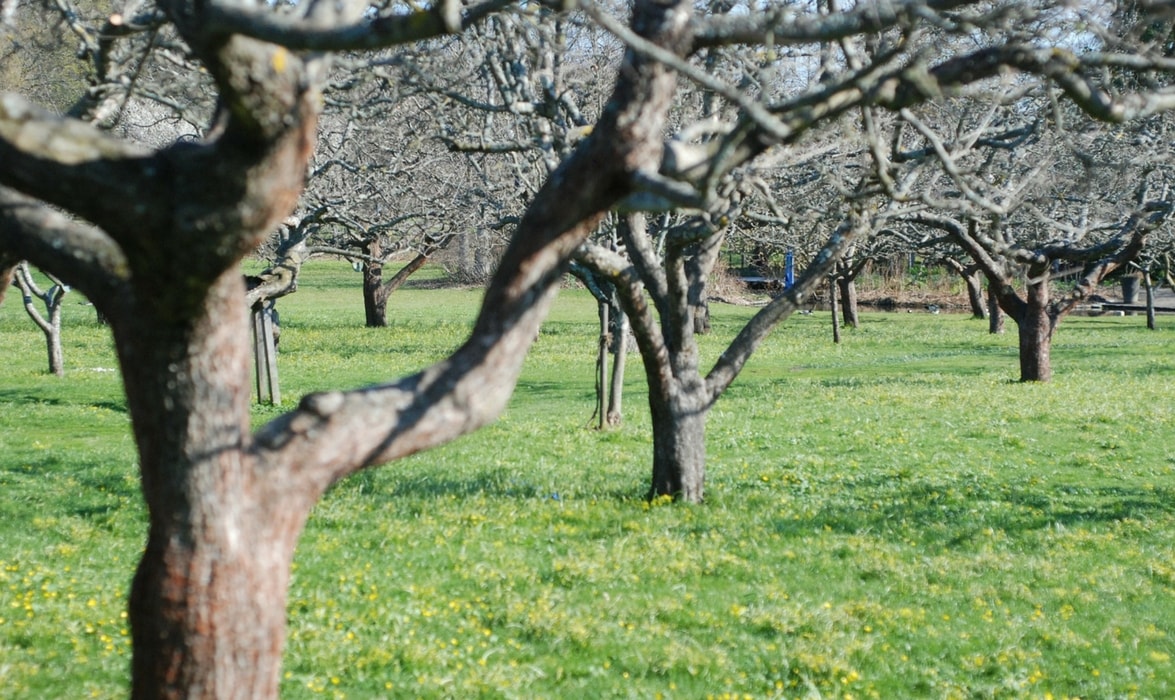
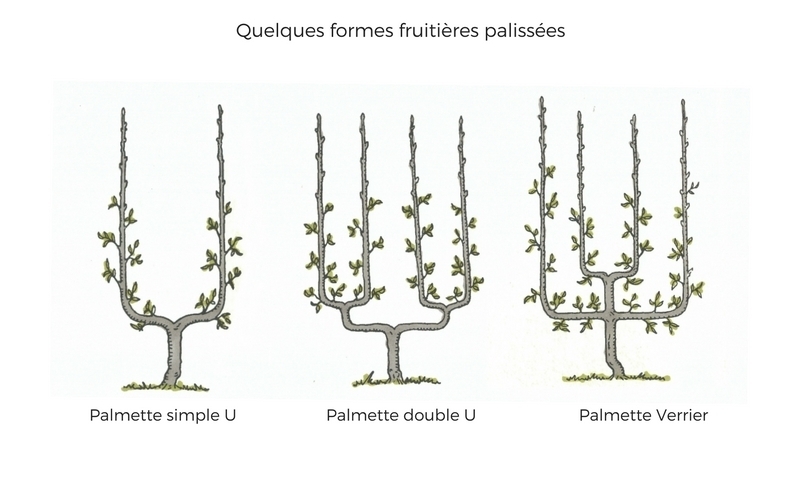
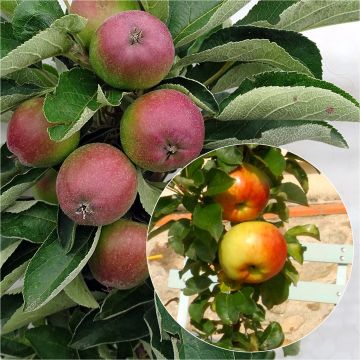
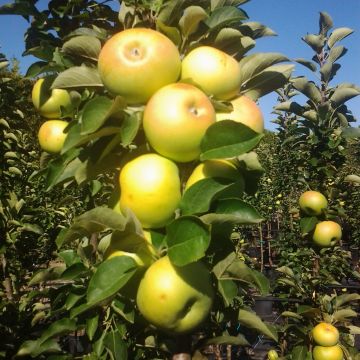
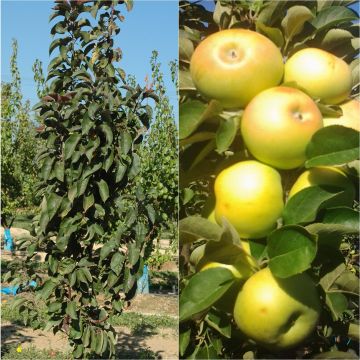
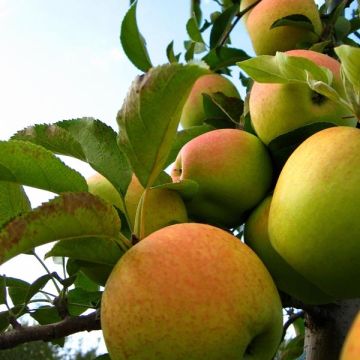
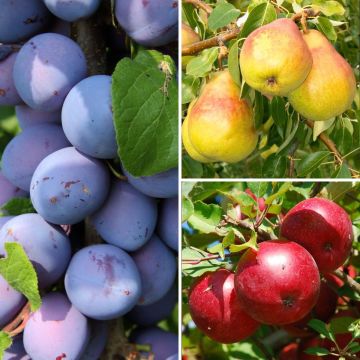
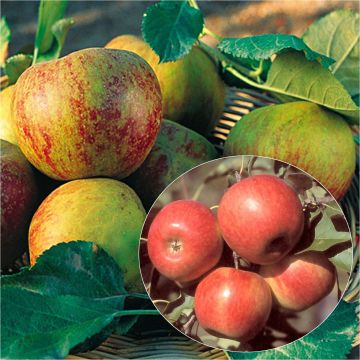
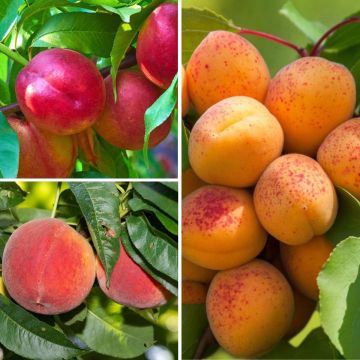
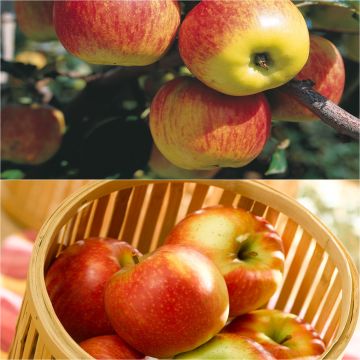
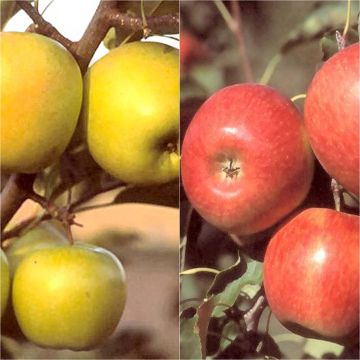
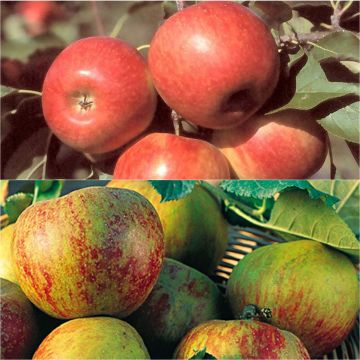
Comments